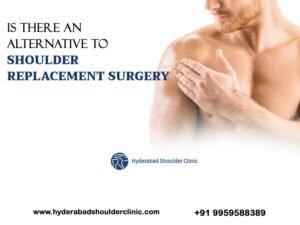A group of muscles surrounding your shoulder joint is called the Rotator Cuff muscles. Their function is to generate the force required to lift and rotate your arm. With increasing age, these muscles get weaker and are more likely to rupture, often with minimal injuries. Rotator Cuff tears typically occur at the point where the muscle inserts into the bone, which is at the junction of the muscle and the tendon.
Sadly, when the Rotator Cuff muscles are completely torn, they don’t heal themselves. Ignoring them unattended might cause the tear to progress, resulting in the loss of mobility and strength. The longer a major tear is left in the knee, the larger it becomes, and the more mobility and strength are lost. Treating a smaller tear has a better surgical outcome than a larger tear. So, if the large tear goes untreated, the surgical outcomes are very poor.
Patients tend to experience extreme pain during arm elevation and soreness while sleeping. They may eventually lose movement in the shoulder to a larger extent.
Shoulder arthroscopy is one of the common orthopaedic procedures after knee arthroscopy. It can help diagnose and treat various problems related to joints, bones, muscles, ligaments, & tendons.
The rotator cuff repair is among the most commonly performed shoulder arthroscopy procedures.
What happens during arthroscopic Rotator Cuff repair?

An arthroscopic Rotator Cuff repair is a major surgical procedure with a six-month recovery. The outcomes are normally quite favourable, but even a great success may not guarantee you 100% functions of a natural shoulder. The operation’s basic concept is to reattach the torn muscle back to the bone from which it has been disconnected.
- You were made to sleep in a beach chair or lie aside.
- If necessary, your hair on the shoulders is removed and using an antiseptic solution; the area is cleaned. To ensure your arm stays still, it is placed in a clamp to keep it still.
- Some fluids may be injected into your shoulder. It makes it easier for your surgeon to see inside your shoulder joint because the fluid inflates it.
- As arthroscopy is a minimally invasive procedure, the incisions made in your shoulder to perform the surgery are very small, usually around the size of a buttonhole. Then they insert the arthroscope with a tiny camera at the end into this incision.
- The arthroscope is moved in such a way as to reach the damaged portion of the rotator cuff.
- A video screen displays images of your shoulder projected by the camera. Using these images, the surgeon can conclude the exact problem with your shoulder.
- The surgeon inserts some tiny instruments by making other small incisions in your shoulder, and the damaged portion of the rotator cuff tear is repaired.
- Internally surgeons may sometimes use screws with stitches that dissolve, but on some occasions, metal screws with stitches that never dissolve might be needed.
- Surgical teams close incisions after surgery is complete, and your stitches or small bandages are covered with a dressing.

After the Procedure
Make sure you follow any instructions given to you regarding discharge and self-care.
Recovery takes anywhere between 1 to 6 months, depending on the injury severity. Probably you may need to wear a sling for a few days. The sling might need to be worn longer if you had extensive repair work done.
Medicine to manage post-surgical pain will be given. Depending on your surgery, you may be able to return to your regular work or play sports sooner or later. It might take a week or, in some cases, a few months.
Physical therapy after surgery is one of the best options to restore mobility and strength in your operated shoulder. If you follow every instruction given by your surgeon, you will recover safely and quickly.
Arthroscopy may not be an option for every patient with rotator cuff injuries. However, an ideal candidate for the procedure can benefit from the advantages of arthroscopic shoulder surgery.
The incision made in shoulder arthroscopy is small compared to a larger incision in open surgery. The risk of infection is very less. The recovery time also varies but is shorter. Of all, pain and joint stiffness with shoulder arthroscopy are very less than with open surgeries.
For more information about rotator cuff treatment, consult Dr Chandra Sekhar, one of the best doctors for rotator cuff treatment in Hyderabad. Call 9959588389 to book an appointment with the doctor.





